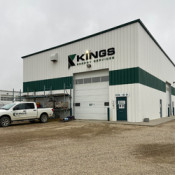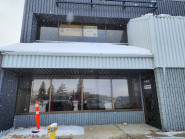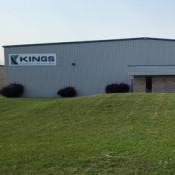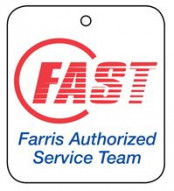
The Importance of Properly Securing Valves
Valves, often considered the unsung heroes of our industrial setups, play a pivotal role in managing fluid flow, maintaining pressure levels, and ensuring the proper functioning of systems. In numerous industries, from oil and gas to water treatment, the performance of these valves is paramount. However, their importance isn't limited to their place of operation – it extends to their transport as well. A mistake made during transportation can compromise their effectiveness, pose safety risks, and lead to financial losses.
Why is Valve Safety during Transport So Critical?
 Prevention of Leaks and Damages: When valves are not secured correctly during transportation, they're vulnerable to knocks and jostles that can damage their structure. Even minor damage can cause leaks, affecting the system's efficiency they'll be installed in and leading to potential environmental and safety hazards.
Prevention of Leaks and Damages: When valves are not secured correctly during transportation, they're vulnerable to knocks and jostles that can damage their structure. Even minor damage can cause leaks, affecting the system's efficiency they'll be installed in and leading to potential environmental and safety hazards.
 Avoiding Accidents: Improperly secured valves can shift during transit, leading to imbalance and accidents. It's not just about the equipment; it's about the safety of everyone involved in the transportation process.
Avoiding Accidents: Improperly secured valves can shift during transit, leading to imbalance and accidents. It's not just about the equipment; it's about the safety of everyone involved in the transportation process.
Guidelines for Safe Valve Transport:
 Orientation Matters: Always ship valves in a secure, upright position. Laying valves on their side can strain parts not designed to bear weight, potentially leading to malfunctions.
Orientation Matters: Always ship valves in a secure, upright position. Laying valves on their side can strain parts not designed to bear weight, potentially leading to malfunctions.
 Information is Key: Always accompany your shipment with the necessary details such as contact information, a list of valves, location information, and any relevant changes like pressure alterations or system design modifications. This ensures that the receiving party knows exactly what they're handling and how to do so correctly.
Information is Key: Always accompany your shipment with the necessary details such as contact information, a list of valves, location information, and any relevant changes like pressure alterations or system design modifications. This ensures that the receiving party knows exactly what they're handling and how to do so correctly.
 Packaging is Paramount: The right packaging is essential. Opt for shipping crates that fit the valves snugly, ensuring minimal movement. Remember, it's not just about preventing external damage, but also protecting intricate internal parts. Avoid the temptation to pile valves in a heap – they're precision instruments, not firewood.
Packaging is Paramount: The right packaging is essential. Opt for shipping crates that fit the valves snugly, ensuring minimal movement. Remember, it's not just about preventing external damage, but also protecting intricate internal parts. Avoid the temptation to pile valves in a heap – they're precision instruments, not firewood.
 MSDS Inclusion: If the valves have been in contact with chemicals, or if they're designed for specific applications that require Material Safety Data Sheets (MSDS), ensure this information is provided. This step is not just about compliance; it's about ensuring safe handling at every stage.
MSDS Inclusion: If the valves have been in contact with chemicals, or if they're designed for specific applications that require Material Safety Data Sheets (MSDS), ensure this information is provided. This step is not just about compliance; it's about ensuring safe handling at every stage.
 Consult with Professionals: If you're unsure about the best shipping practices for your valves, contact professionals like your King Energy Services representative. Leveraging their expertise can provide insights that could save you from potential mistakes.
Consult with Professionals: If you're unsure about the best shipping practices for your valves, contact professionals like your King Energy Services representative. Leveraging their expertise can provide insights that could save you from potential mistakes.
The journey of a valve doesn't start at its point of operation – it begins much earlier, during its transportation. Ensuring its safety during this phase guarantees that it serves its purpose efficiently for a longer period. In an era where industrial efficiency and safety are paramount, giving due attention to something as seemingly mundane as valve transport can make all the difference.







 Box 187
Box 187


 1018 Prescott Dr Unit #2
1018 Prescott Dr Unit #2